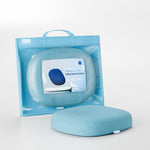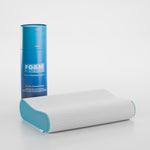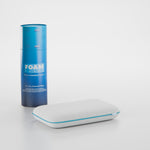Cervical Disc Herniation: Causes, Symptoms and Treatment Methods

The neck, located at the uppermost part of our spine, plays a crucial role in our daily activities. However, factors such as prolonged poor posture, repetitive movements, injuries, or aging can lead to problems in the neck region. One of these problems is cervical disc herniation.
Cervical disc herniation is a condition that occurs as a result of compression or damage to the discs located between the cervical vertebrae. The discs have a spongy structure between the vertebrae, reducing friction between the vertebrae and providing flexibility. However, as a result of excessive stress or injury, the outer part of the discs can tear and the gel-like substance inside can leak out. This situation causes the formation of cervical disc herniation.
What Are the Symptoms of Cervical Disc Herniation?
Cervical disc herniation symptoms can vary from person to person. However, the following symptoms are generally seen as signs of cervical disc herniation:
– Neck pain: Cervical disc herniation usually causes pain in the neck area. The pain may increase over time and can be felt in the shoulders, arms, and even hands.
– Arm and hand numbness: Cervical disc herniation can cause numbness, tingling, or loss of strength in the arms and hands by putting pressure on nerve roots.
– Headache: People with cervical disc herniation may sometimes experience headaches. These headaches usually concentrate in the nape area.
– Limited neck movement: People with cervical disc herniation may feel restriction in movements such as turning their neck left and right or bending up and down.
How Is Cervical Disc Herniation Treated?
Cervical disc herniation treatment may vary depending on the severity of symptoms, the patient's general health condition, and other factors. Here are the treatment methods for cervical disc herniation:
Medication therapy: To reduce pain and inflammation, your doctor may recommend pain relievers or anti-inflammatory medications.
Physical therapy: Physiotherapists can help reduce pain by applying special exercises and manual therapy to people with cervical disc herniation.
Injection therapy: Injecting steroid or anesthetic medications into the neck area can alleviate pain and reduce inflammation.
Surgical intervention: In rare cases, when other treatment methods are not effective, surgical intervention may be necessary. Surgical options include discectomy, microdiscectomy, or fusion.
Neck Comfort with FOAMSLEEP Premium Contour Pillow
Using supportive products in cervical disc herniation treatment can play an important role in the treatment process. The Premium Contour Pillow produced by FOAMSLEEP provides anatomical support to the neck area and provides relief. This pillow can be used in all diseases that cause discomfort in the neck and is especially preferred for those who sit at the computer for long periods.
FOAMSLEEP Premium Contour Pillow helps people with cervical disc herniation stay in the correct position during sleep and reduces pain in the neck area. Additionally, thanks to the pillow's special design, it maintains the correct alignment of the cervical spine and improves sleep quality.
Everyone who feels discomfort in their neck should experience the comfort offered by FOAMSLEEP Premium Contour Pillow.
For more information about our ergonomic sleep solutions, visit fomsleep.com
Disclaimer: This information does not constitute medical advice. Please consult with a healthcare professional for proper diagnosis and treatment.




